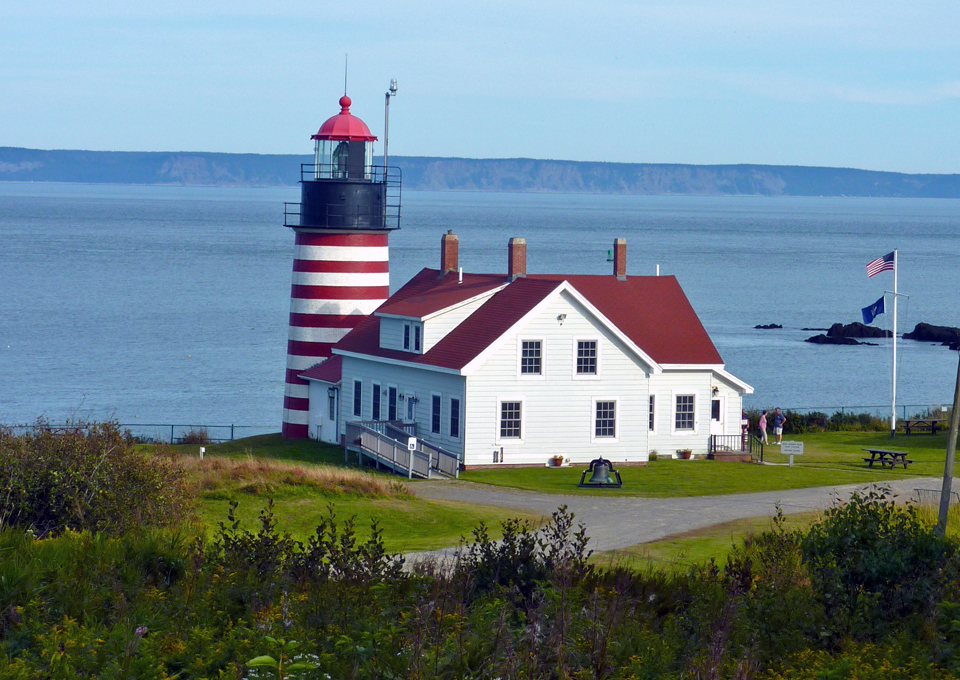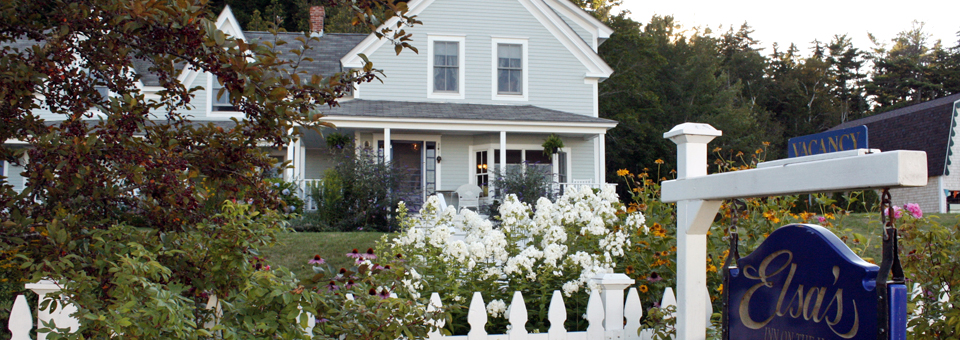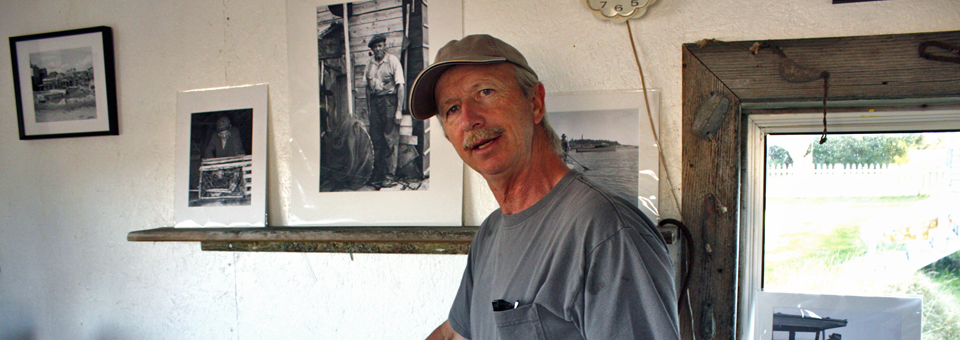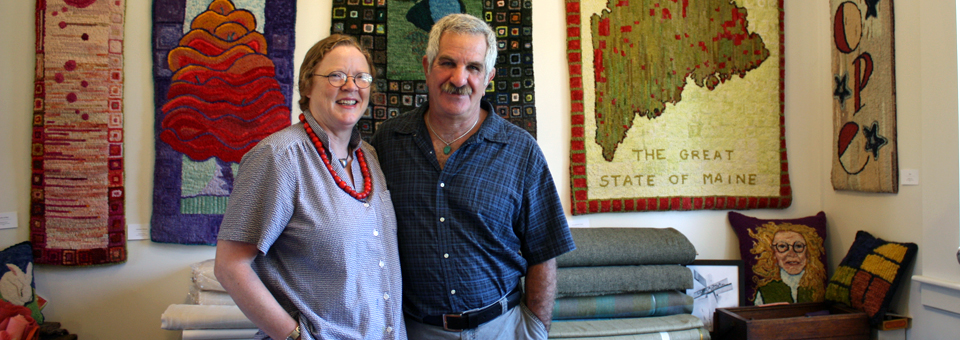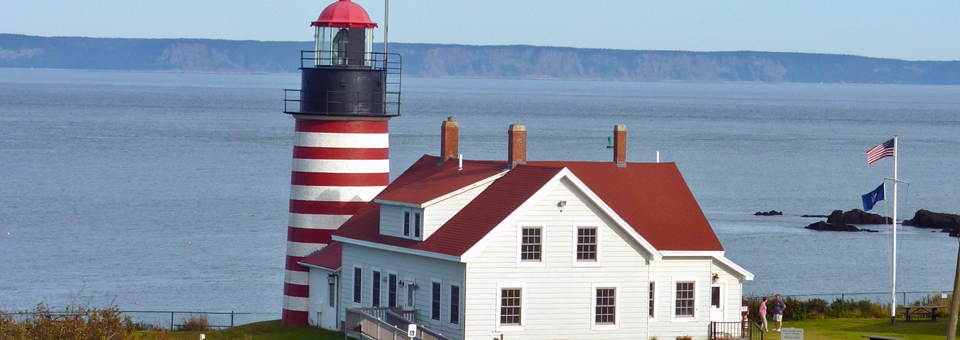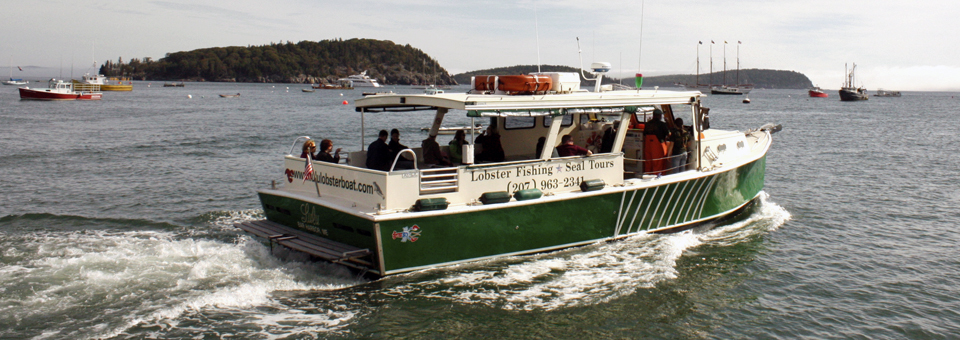Where time is measured by the sun and tides: the northeast coast of Maine
We wanted to enjoy the beauty and natural wonders of America’s northeast coast and take some roads less traveled. We headed for Northern Maine and visited places with the ambience of a more relaxed era– when time was measured by the sun and tides.
We visited tiny fishing villages, met artists in their galleries, dined on the freshest of seafood, went on a whale watch, cruised aboard a lobster boat and discovered more about Native American heritage.
The Schoodic Peninsula and the Easternmost Town in the USA
It’s a warm welcome at Elsa’s Inn on the Harbor, with just-baked shortbread cookies and coffee or tea in china cups. The pristine, newly renovated house in Prospect Harbor has been in this family of lobster fishermen for generations. There are quilts and ruffled curtains, fresh flowers, embroidered linens, plush robes, framed family photos and a welcoming treat in the tastefully decorated rooms. We relaxed on the front porch, watched the lobster boats return with their catch, took in the view of Prospect Harbor Light, and read selections from the inn’s library.
Dinner was at Bunker’s Wharf in Birch Harbor, owned and operated by Chef Nathan Hall. We booked a window table for a sunset harbor view. Top choices include the stew–chock-full of lobster–and the Atlantic haddock stuffed with crabmeat and topped with lobster cream.
The next day, while some of our group went on a three hour kayaking tour in Birch
Harbor with SeaScape Kayaking, others opted for the trails of Roque Bluffs State Park, hiking through meadows and woods and sighting marine birds along rocky shores.
We drove to the picturesque fishing village of Corea, where we met Joe Young, whose
ancestors became the area’s first white settlers around the time of the War of 1812. Joe
was in the shed where his family has stored and maintained gear for generations and
showed us a device his grandfather, also a rum runner, built to make half round lobster
traps.
Summers, after a busy day as a lobster fisherman, Joe uses his shed as a gallery, The Corea Wharf Gallery features the photography of his aunt, Louise Z. Young, who left Corea to work in portrait studios and returned to photograph the area in the 1940s, 50s and 60s. Young also displays historic street scenes of Paris made from glass plates created by renowned photographer Eugène Atget’s, acquired as a result of his aunt’s association with architectural photographer Berenice Abbot, who purchased the plates from Atget’s estate.
Luci Shapiro grew up in homes furnished with antiques collected wherever they lived,
and continues the tradition in her shop, Goody Goods, in the Post Office building in the
town center, it’s a place to find an astounding variety of treasures, from fine European
porcelain to hand-carved folk art.
Just down the road is Rosemary and Garry Levin’s Chapter 2 Gallery and
the adjacent Spurling House Gallery of Contemporary Art and Craft. Rosemary’s artistic
talents span many media, and a continuing education class spawned her interest in
rugs. Beginning with a painting, she uses vintage and new wool to hook original designs
that include her Border Collie, Lucky, and the Acadia bridges.
Garry has a rare and eclectic book collection, and there’s a kaleidoscope of distinctive
and creative works by other talented artists and artisans drawn to this area–paintings,
book folding, woolen accessories, colorful glassware, furniture, household implements,
collages, mobiles, metal sculptures, and much more. A garage out back has books for
$1 or less–ideal for vacation reading.
We continued on Route 1 past the glass and pottery studios and wineries of
the Gouldsboro area, taking scenic Route 1A from Millbridge. We stopped at Columbia
Falls Pottery and the adjacent Ruggles House, built 1818-1820 for Judge Thomas Ruggles of Massachusetts, who was also a lumber merchant and postmaster. Three generations lived in this home that features a flying staircase, elaborate hand-carved
woodwork, and original furnishings.
We stopped for a photo op at West Quoddy Head Lighthouse, easternmost
point in the USA. There was just enough time to stop at Bold Coast Smokehouse and
Monica’s Chocolates, both on Route 189, before checking into our cozy B&B, The Home Port Inn ($95-115) in Lubec. It was a short walk downhill to Fisherman’s Wharf Restaurant & Seafood, where we feasted on 1 1/2 pound lobster dinners.
Lubec was once known for shipbuilding, smoked herring, sardines, and a border
trade that included smugglers and bootleggers. The last remaining smokehouse is
now a museum, and continuing industries include fishing– lobsters, scallops, sea
urchins, and salmon aquaculture–and tourism.
Eastport
Route 1 South to Route 190 leads to Eastport, easternmost city in the USA. When British troops occupied it between 1814 and 1818 they established the present international border. Smugglers ran off to Lubec.
Before reaching the Commons area, we stopped at Raye’s Mustard to stock up on our favorite varieties. Kevin and Karin Raye are the fourth generation owners and operators of the nation’s only remaining traditional stone ground mustard mill, a century-old working museum. They use a cold grind process to produce mustards that become thicker and creamier as they pass through each of the four large stones, retaining flavors lost in today’s cooked processes.
Eastport’s historic downtown, the Commons, is a good place for lunch and to explore unique shops, galleries, and the Tide Institute’s binational collections from the greater Passamaquoddy region. In tribute to the binational culture between New England and Atlantic Canada, the festival-loving Eastport’s New Year’s Eve celebration includes lowering a giant red maple leaf at midnight Atlantic time (11 pm Eastern) and an eight foot sardine at midnight Eastern time.
We took Route 190 back to Route 1 South to Sullivan Harbor Farm Smokehouse in Hancock Village and continued to Route 3 and Bar Harbor and Acadia National Park. Anne’s White Columns Inn on Mount Desert Street was easy to spot, and we were just in time to enjoy the late afternoon wine and cheese reception.
From late June through early October, the National Park Service offers the option of a free Island Explorer bus into Acadia National Park. There are a plenty of activities– exploring, hiking, bicycling, or just enjoying the view from Cadillac Mountain. A lunch favorite is popovers and chowder at Jordan Pond House.
We walked from our inn to the pier, browsing the shops en route to Lulu’s Lobster Boat. It’s rated #1 tour in Bar Harbor by Trip Advisor and has been featured in places like the Food Network and PBS. Captain John regaled us with tales of lobstering and Maine fisheries conservation efforts as he hauled traps, explained lobster anatomy and biology, and provided close-up views of seals and bald eagles.
Our walk back to the inn led us to the Abbe Museum, also on Mount Desert Street. It’s a great resource for learning about Maine’s native people, the Wabanaki.
We celebrated our final evening in style at one of Bar Harbor’s many special events–Fashion Night Out. Merchants hosted in-store events that included food and wine tastings, giveaways, fashion shows, arts and crafts, music, dancing and more–a festive finale to our Maine vacation.
This material is copyrighted and may be used only with the written permission of Roger or Linda Fasteson.

